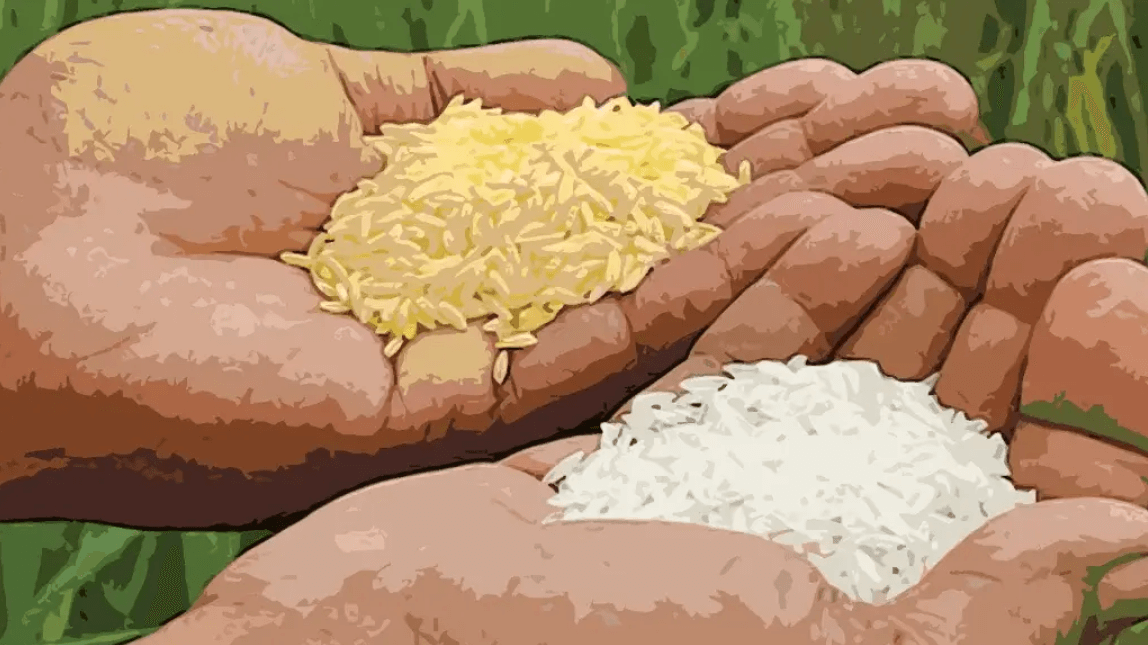Perhaps some glimmer of enlightenment toward genetic engineering is belatedly emerging. We were somewhat encouraged recently by “Learning to Love GMOs,” from science writer Jennifer Kahn in the New York Times Magazine in July. (“GMO,” or genetically modified organism, is a rather fluid, meaningless term used to refer to an organism modified with highly precise and predictable molecular techniques.)
At the risk of nitpicking, however, we felt that she over-emphasized the handful of genetically engineered farm products intended to be sold directly to consumers, while omitting the more important but less sexy story: the huge, palpable, proven benefits that GE crops have provided since they first hit the marketplace. Not surprisingly, there was also no mention of her newspaper’s decades-long, ugly history of disparaging and misrepresenting genetic engineering.
The big picture here is important, especially to America’s preeminence in the science, technologies, and application of genetic engineering. The U.S. is an agricultural powerhouse, but it is plagued by the eternal menaces to farming, including drought, floods, weeds, and pestilence—all of which are approachable by GE, in which America leads the world. Moreover, as valuable as GE is to the economic development of advanced countries, it is literally a life-saver to less developed ones. Kahn broaches none of this.

The GE agriculture market
Kahn begins with a lively description of plant biologist and British professor Cathie Martin and her fabulous, GE cancer-fighting tomatoes. These fruits, dark purple in color, produce high amounts of anthocyanins, compounds usually associated with blueberries and containing antioxidant activity. Professor Martin was able to demonstrate that cancer-prone mice fed these tomatoes lived 30% longer and were also less susceptible to inflammatory bowel disease than mice fed ordinary, non-engineered tomatoes.
The article discusses other GE specialty fruits, such as virus-resistant Rainbow Papayas (which rescued Hawaii’s papaya industry from oblivion) and non-browning Arctic Apples, which have found valuable niches in today’s market. Kahn also makes honorable mention of other GE fruits and vegetables in development, such as tastier berries and sweeter, kid-friendly kale, among many others.
Readers are left with the impression that such new crop varieties that will tickle consumers’ taste buds and satisfy their nutritional needs are the goal—and the real value—of GE, and that these developments are just around the corner thanks to plant genetic engineering. Could that, Khan speculates, spell the turning point for widespread public acceptance of genetically engineered crops?
The problem is that Khan misidentifies the consumers who most need and would benefit from GE advances. “Since their introduction in the mid-1990s,” she writes, “GMOs have remained wildly unpopular with consumers, who see them as dubious tools of Big Ag, with potentially sinister impacts on both people and the environment.” Kahn frames the problem of GE production as the plight of small, artisanal food growers due to federal regulation that favors “global agricultural conglomerates.” “[J]ust to go through the FDA approval process would cost a million dollars. Adding USDA approval could push that amount even higher,” she writes. The regulatory barriers are, in fact, astronomical: it costs about $136 million to bring a GE crop plant to market. This is the primary reason more than 99% of such crop plants are those that are grown at huge scale. (What makes this absurd is that plants modified with less precise, less predictable, conventional, pre-molecular techniques are virtually unregulated.)
The solution—advances in the development of “small-scale, bespoke GMO produce”—is inviting to Kahn, whose efforts seem directed at convincing “WWWs”:
[Professor] Martin is perhaps onto something when she describes those most opposed to GMOs as ‘the WWWs’: the well, wealthy, and worried, the same cohort of upper-middle-class shoppers who have turned organic food into a multibillion-dollar industry. ‘If you’re a WWW, the calculation is, GMOs seem bad, so I’m just going to avoid them,” she said. ‘I mean, if you think there might be a risk, and there’s no benefit to you, why even consider it?
Although it’s true that the potential for new, delicious, nutritious GE fruits and vegetables is vast, Kahn ignores the enormous success of genetically engineered crops across much of the world over the past three decades—importantly, for more than just the well, wealthy, and worried. GE crops have in fact made food more affordable and proved to be a vital life-saving source of food and agricultural inputs for much of the developing world. It’s time to set the record straight.

Worldwide impacts of GE innovation
Kahn laments that much of the effort in plant genetic engineering has been to produce improved varieties of our most commercially important crops, such as pest-resistant corn and cotton, herbicide-tolerant soybeans and canola (in order that weeds can be controlled more safely and effectively than by foliar spraying), and other agronomic traits such as resilience to flooding or drought. Although consumers may be unaware of these achievements, they have been eagerly embraced by farmers and critical to progress in agriculture. The acreage farmed with genetically engineered crops, which reached almost a half-billion acres worldwide in 2018, increases every year, particularly in developing countries. (And that figure is only the official acreage; there is a great deal more cultivation with seeds obtained on the black market by farmers in countries where they’re not yet approved.)
In fact, the economic and environmental impacts of corn, cotton, canola, soybeans, and sugar beets alone have been enormous across the globe. According to economists Brookes and Barfoot (2020), GE insect-resistant and herbicide-tolerant crops have reduced pesticide spraying by 775.4 million kg. This, in turn, has resulted in a decrease in the use of fuel and tillage, which is equivalent to a reduction of greenhouse gas release on the order of removing 15.27 million cars from the roads.
Improved environmental impacts coincide with significant economic benefits to farmers in the form of improved yields (72%) and savings in farming costs (28%) resulting from reduced use of agricultural inputs such as chemicals. Financial gains have exceeded $225 billion since genetically engineered crops first became commercially available, with the most gains realized by farmers in developing countries. Brookes and Barfoot estimate that for every dollar invested in the seeds of GE crops, farmers in developed countries received on average $3.24 extra income. This return on investment increased to $4.41 for farmers in developing countries, where such benefits can be the difference between subsistence farming and being able to sell some of their harvests.
It is unfortunate that a technology that has been so beneficial for so many farmers has been vilified since its beginnings (including, early and often, by reporters, columnists, and commentators in the New York Times), and we wish that Kahn’s article had put more emphasis on the extant, significant achievements.
The impressive data collected and reported by Brookes and Barfoot are only the beginning. The opportunities for genetically engineered crops to reduce malnutrition and increase farmers’ profits are endless. Kahn does mention in passing Golden Rice, which produces a precursor of vitamin A and prevents vitamin A deficiency—a scourge of children that causes blindness and death in countries where most of their calories come from rice—which was recently approved for cultivation in the Philippines. (And which has been relentlessly opposed by activists for decades.) But there are many more such examples, including staple engineered crops such as rice biofortified with iron, zinc, and folate.
Besides higher yields and direct economic benefits, the cultivation of insect-resistant and herbicide-tolerant crops also has significant collateral effects in developing countries, such as reducing laborious tasks of women and girls in the field, improved children’s literacy, and greater gender equality. These, in turn, foster improved economic growth and quality of life for communities.
In addition, decreased crop losses due to pests lead not only to improved yields and farmers’ incomes, but, especially compared to organic farming, also reduce levels of food waste and lower the risk of cancer, spina bifida in newborns, and other health problems caused by the fungal toxins aflatoxin and fumonisin, respectively, which are less likely to accumulate in crops that are protected from predation by insects. Improved crop quality and yields and lower agronomic inputs also translate into less release of greenhouse gases (and, thus, a lower carbon footprint) and less conversion of land to farming.
Unlike the spraying of chemical pesticides, the cultivation of crops like Bt-cotton and Bt-brinjal (eggplant), which contain a protein (from the bacterium Bacillus thuringiensis) toxic to certain insects, does not impact non-target insects. They are helpful, therefore, for maintaining and restoring the health of natural ecosystems and the sustainable management of wilderness areas. At the same time, genetic engineering technologies related to biomass production using crops ranging from sugarcane to switchgrass, and even algae, are helping to produce affordable, attainable energy.
Underscoring their significance, particularly for poor farmers in developing countries, many of these improvements fall under the sustainable development goals established by the United Nations.

Putting science and innovation first
It seems that American consumers crave technology in every aspect of their lives except in food production. Why is that? We believe it is the result of a multi-decade, multi-national, multi-billion dollar fear-and-smear campaign against GE crops and foods by what amounts to an anti-genetic engineering industry.
Technology has helped to double food production in the last 50 years. We have the cheapest, safest, most abundant food supply in history, but now, those seeking to increase the market for organic/natural products, abetted by the woke media, want to force agricultural science to a more primitive, less productive time by embracing inefficient practices. Although they have been successful in creating a niche for their products, we cannot let this way of thinking stymie or reverse the stunning scientific, economic, and environmental advances that have come from genetic engineering and gene editing technologies, in which the U.S. is preeminent.
Regulators permitting, the next wave of important developments could be in the genetic engineering of animals, in particular the creation of new varieties resistant to devastating, economically crippling diseases. These include pigs resistant to the devastating Porcine Reproductive and Respiratory Syndrome Virus, the cause of losses to U.S. pig farmers of more than $600 million annually. The foreseeable development of chickens with genetic resistance to avian influenza will be a monumental breakthrough because there is no vaccine against it, and outbreaks result in the culling of tens of millions of birds annually. This field has the potential to create the Next Big Things in agriculture—if only innovation were not strangled by unnecessary, misguided government regulation, abetted by an antagonistic media and highly organized, vocal activists.
Americans are experiencing shocking inflation in food prices, and the wider adoption of innovative GE technologies can help to stem it. Insect predation, weeds, and unpredictable weather events are the perennial enemies of farmers but, as discussed above, GE has already made significant strides to mitigate them. The greater exploitation of drought- and flood-resistant crop plants and the prevention of viral diseases in food animals can also aid food production in the parts of the nation plagued by those natural disruptions.
Putting America first means putting science and innovation first. Billions in potential revenue and life-saving technologies have already been lost to us because of our failure to adopt this attitude. Consider “biopharming”—the once-promising biotechnology area that uses genetic engineering techniques to induce crops such as corn, tomatoes ,and tobacco to produce high concentrations of high-value pharmaceuticals (one of which is the Ebola drug, ZMapp). The entire field is moribund because of the Agriculture Department’s extraordinary regulatory burdens. And thanks to EPA’s policies, which discriminate against organisms modified with the most precise and predictable techniques, the high hopes for genetically engineered “biorational” microbial pesticides and microorganisms to clean up toxic wastes have evaporated.
As a result, the potential for innovation that modern genetic engineering holds for long-term, robust U.S. economic growth and higher living standards has been drastically reduced. Amazon CEO Jeff Bezos also made this point in the context of developing commercial drones at a conference in 2014. “Technology is not going to be the long pole,” he said. “The long pole is going to be regulatory.” And yet, regulatory agencies seem to be becoming more imperious and politicized. If U.S. policymakers fail to seize the day, we will likely be overtaken by China, which is fast becoming a significant player. As University of Pennsylvania political scientist Scott Moore has written, China’s progress has implications that “span national security, data security, and economic competitiveness.”
None of the big picture appeared on Kahn or the New York Times’s radar screen. We hope, however, to see a follow-up from her that tells the whole story—that over four decades, genetic engineering has delivered myriad critical economic, health, humanitarian, environmental, and scientific benefits. That we need more of it, regulated more rationally. And that its critics, including her colleagues at the Times, are misinformed and misguided.
Kathleen Hefferon, Ph.D., teaches microbiology at Cornell University. Find Kathleen on Twitter @KHefferon
Henry Miller, a physician and molecular biologist, is a senior fellow at the Pacific Research Institute. He was a Research Associate at the NIH and the founding director of the FDA’s Office of Biotechnology. Find Henry on Twitter @henryimiller
A version of this article was originally posted at Human Events and is reposted here with permission. Human Events can be found on Twitter @humanevents































